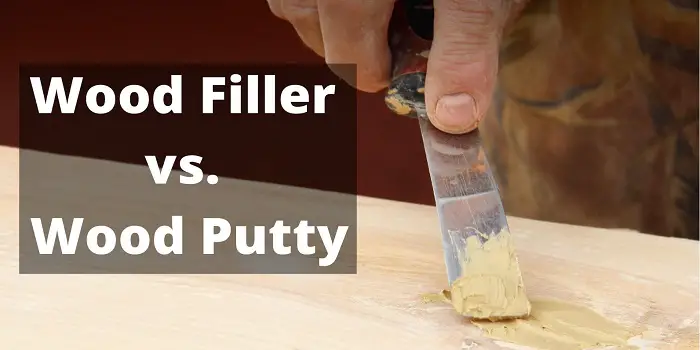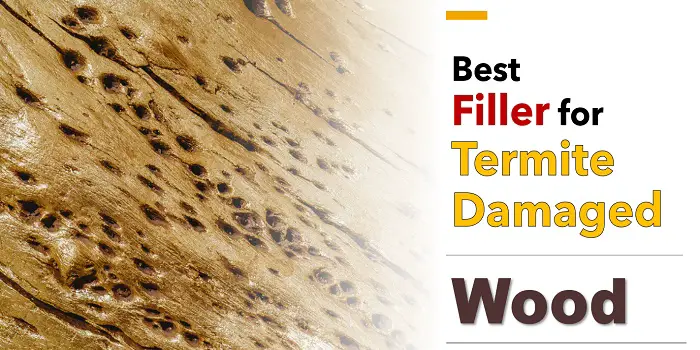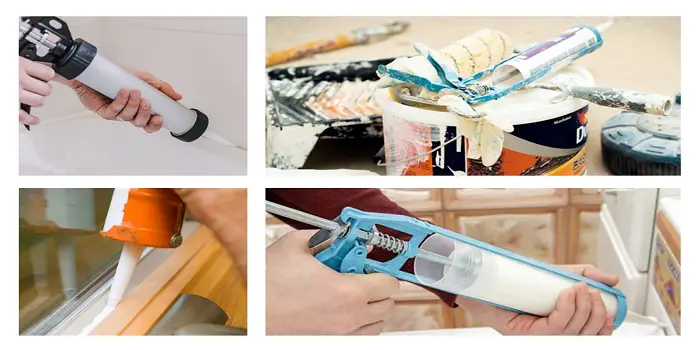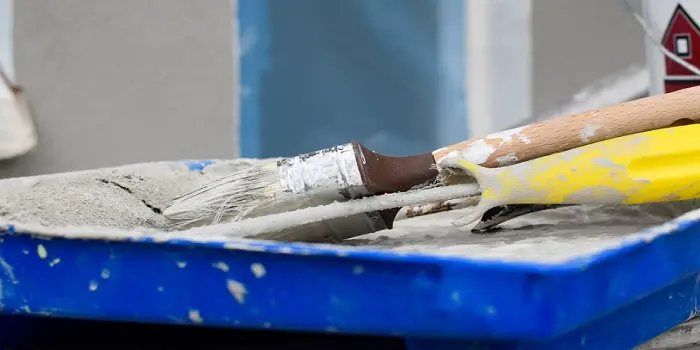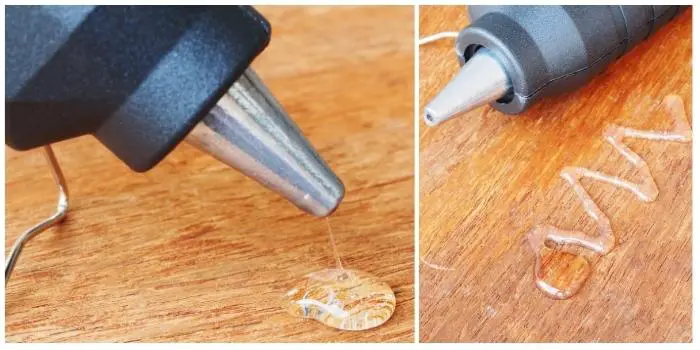
Hot glue is a form of adhesive that you might be familiar with. Regardless of the paint finish (whether flat, semi-gloss, or glossy), you have on your walls you can put a dab of hot glue on your craft item and then stick it gently on the walls or wood. The good thing is that you can pull it off slowly from the surface whenever you want without peeling away the paint.
Unlike common belief, you can use it for innumerable kinds of projects, including your room drywall decorating purposes. In fact, I have used hot glue many times to glue various decorative craft pieces to my walls, stairs, and wood furniture.
My wife used it to glue recipes and ideas on our kitchen wall. And my kids frequently use it to hang several wall hangings in their room.
In this article, you’ll find out more about hot glue, including what it is, when it was developed, how it works, its strength, its curing process, and a lot more.
So, let’s get into…
What's Here in the Article:
What is Hot Glue?
In technical terms, hot glue (also known as hot melt adhesive, abbreviated HMA) is a sort of thermoplastic adhesive.
It contains ethylene-vinyl acetate (EVA), polyolefins, polyamides and polyesters, styrene block copolymers, polyethylene, ethylene-methyl acrylate (EMA), and/or ethylene n-butyl acrylate as the primary constituents (EnBA).
Hot glue differs from other glues as it does not employ specific components to stick to objects but rather relies on cooling and solidifying from hot and melted forms to establish a bond.
Furthermore, unlike other forms of adhesive that are liquid and must be poured from a tube or container before getting cured on the materials, hot glue in its usual condition is completely solid.
It comes in the shape of transparent and solid cylindrical sticks, which are simply bits of plastic that are melted using a specific instrument that we will discuss later.
How Does a Hot Glue Gun Work?
All adhesives are either water-based or non-water-based, but they all have one thing in common, they are all liquid in their usual condition. But it’s not the case with hot glue, as it remains in a solid state at ambient temperature.
This is why it is referred to as hot glue; it must be heated to melt into a liquid state that can then be applied to a surface.
To heat this, a device with a powerful heating element is utilized, and the device is nothing but a glue gun. When the hot glue gun’s trigger is pushed, the melted thermoplastic adhesive is dispensed.
What is crucial to note here is the evaporation cure of the water-based glue. As the moisture evaporates, they harden. When non-water-based sealants come into touch with moisture or UV radiation, they frequently cure.
Hot glue, on the other hand, is not like this at all, and it does not cure. Curing is commonly done by the process of hardening as a result of a chemical reaction.
Although it may appear that cooling down from a high temperature is a chemical process, it is not. By simply cooling down, hot glue joins things together. When hot glue cools, it solidifies into a solid and extremely durable substance known as plastic.
Can You Use Hot Glue On Wood and Wall?
When it comes to generic uses in homes and schools, the most typical application of hot glue is for crafting because it’s incredibly simple to use. You can make some creative craft pieces and attach them to the walls, wood cabinets, tables, chairs, etc with hot glue. It forms bonds fast.
Hot glue is also quite safe and works great for gluing many kinds of arts and crafts together. Materials such as papers, belts, plastic, imitation jewels, and other such items can be easily glued with a simple inexpensive hot glue gun.
Hot glue is also utilized in manufacturing low-cost wood furniture, such as gluing MDF boards together or filling small holes and cracks. It isn’t the best form of glue for furniture, but it is a choice.
Another popular application for hot glue is to stick folded carton boxes in the box business. They can also be used to secure cables and other components inside phones and other electrical gadgets.
Keep in mind that curing is defined as a chemical interaction between agents that results in material hardening. Although cooling and heating are scientific and may be interpreted as chemical processes, they are not.
The solidifying of hot glue when cooling down is due to the qualities of the components as well as the difference between materials in liquid and solid phases. Curing is not the process of cooling and solidifying from the melted state. So, while hot glue does the same, it does not cure.
In simple words, hot glue, in reality, cools, dries, and hardens but does not cure. To harden it completely on wood or wall you should allow at least 24 hours.
Share the post "Can You Use Hot Glue on Walls and Furniture?"

Douglas Becker (aka Painter Doug) has over twenty years of experience as a painter in Adkins, Texas. At present, he resides in Florida with his family.
From painting multi-storeyed houses, condos, and apartments to large commercial buildings and small offices, he had served various customers in areas not only in Adkins but also in Southwest Florida, Sarasota, Naples, and many more. To know more about him check here.

